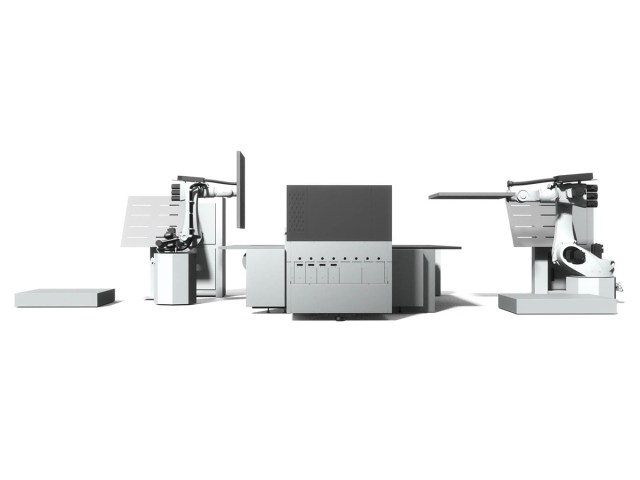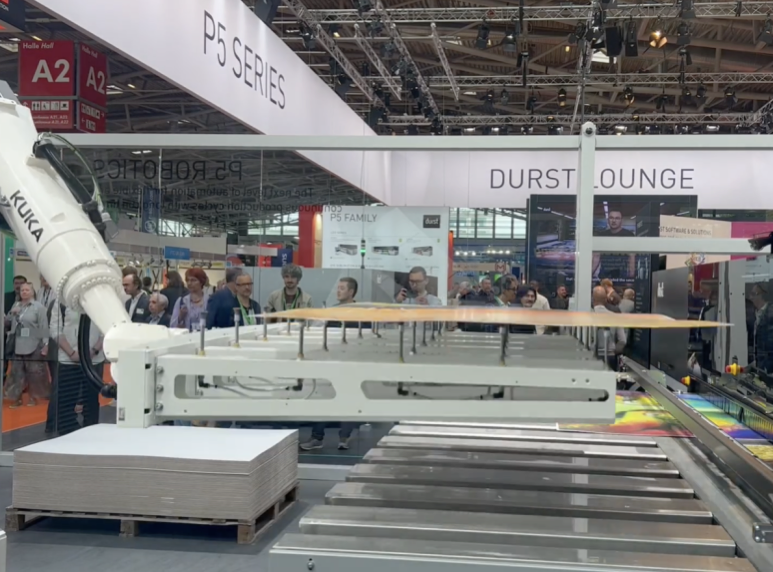The introduction of an unmanned robotic system on the Durst stand has stolen the show in terms of visitor engagement and interest at the Fespa 2023 exhibition this week in Munich.
In a move that was not known to many people within the company, let alone the industry, the unveiling of the Durst P5 Robotics concept followed a year of research and development.
The metronomically mesmerising robotic performance was the most photographed and videoed area at the Fespa 2023 exhibition as printers weighed up and openly debated the potential benefits of the €500,000 investment – equivalent to over A$820,000 – that would be required to duplicate the dual-robot prototype concept demonstrated.
Watch the videos of the Durst P5 Robotics in action below:
There were mixed reviews among printers interviewed by Sprinter about the potential return on investment. Some printers were very enthusiastic and said the P5 Robotics concept was “cheap” when the cost was revealed while others did not believe the concept suited their business.

According to Durst, the decision to introduce the P5 Robotics concept was the logical next step following the introduction of the P5 Automat – the company’s automated feeder/stacker system for flatbed printing.
“Durst is igniting the next stage of automation with P5 Robotics for flexible and continuous production cycles with long run times,” the company said in a statement.
“At the heart of the P5 Robotics is the flagship P5 350 HS D4 hybrid printing system, whose feeder/stacker unit is formed by two Kuka robots to handle the unmanned production of a complete shift.
“The robots, modified and programmed by Durst, can pick up media from different pallets with a height of up to 180cm, feed them and then stack them again separately. In the process, the printed media can also be turned 180-degrees for reverse-side printing and fed into a second printing system. P5 Robotics can also be expanded with third party solutions or finishing systems.”
Here’s another video of the Durst P5 Robotics in action from a different angle:
One of the Durst project leaders Reinhard Schneeberger said the prototype concept was demonstrating 1.2m x 1.6m and 50cm x 70cm sheet sizes, but other size configurations were available with different gripping modules. It is expected that the company will manage the P5 Robotics division from its facility in Lienz.
“The reaction has been very strong and we have a lot of leads from customers that are impressed with this system and now we have to follow-up with them after the exhibition,” Schneeberger said.
Durst Oceania managing director Matt Ashman said he believes this is a “game-changing technology”.
“What is required is high speed robotics and precision robotics. Just like a Durst P5 350 HS D4 – we need high speed robotics to keep up with a machine that delivers high productivity,” he said.
“When you are printing at 700 square metres an hour – most normal robotics don’t keep up – but ours do. We are already talking to cutter suppliers to make the robots feed directly into cutting solutions and then you will end up with a finished cut stack – and this is the holy grail. Lights out.”


